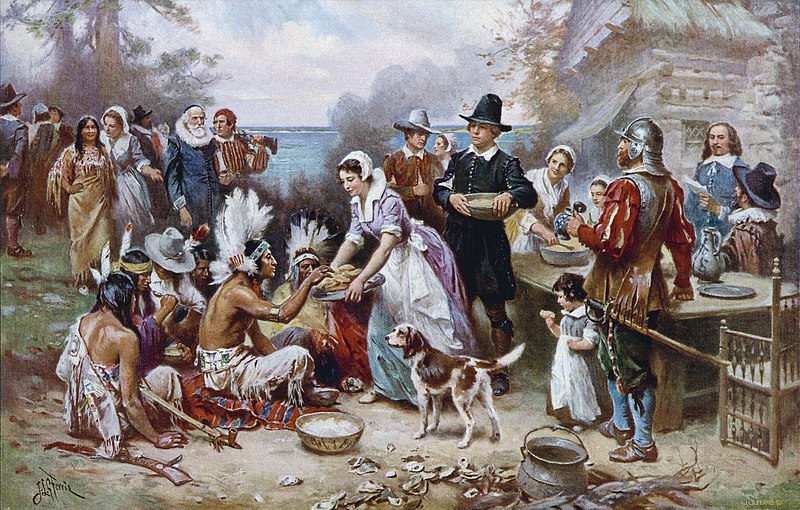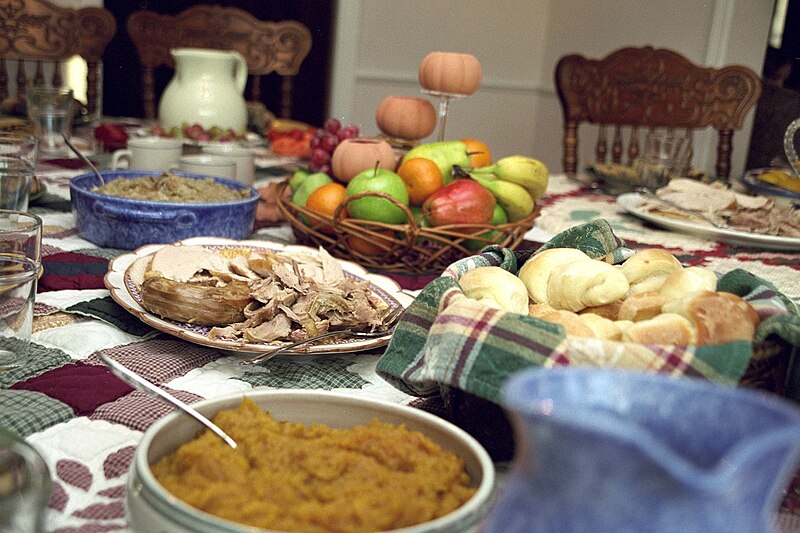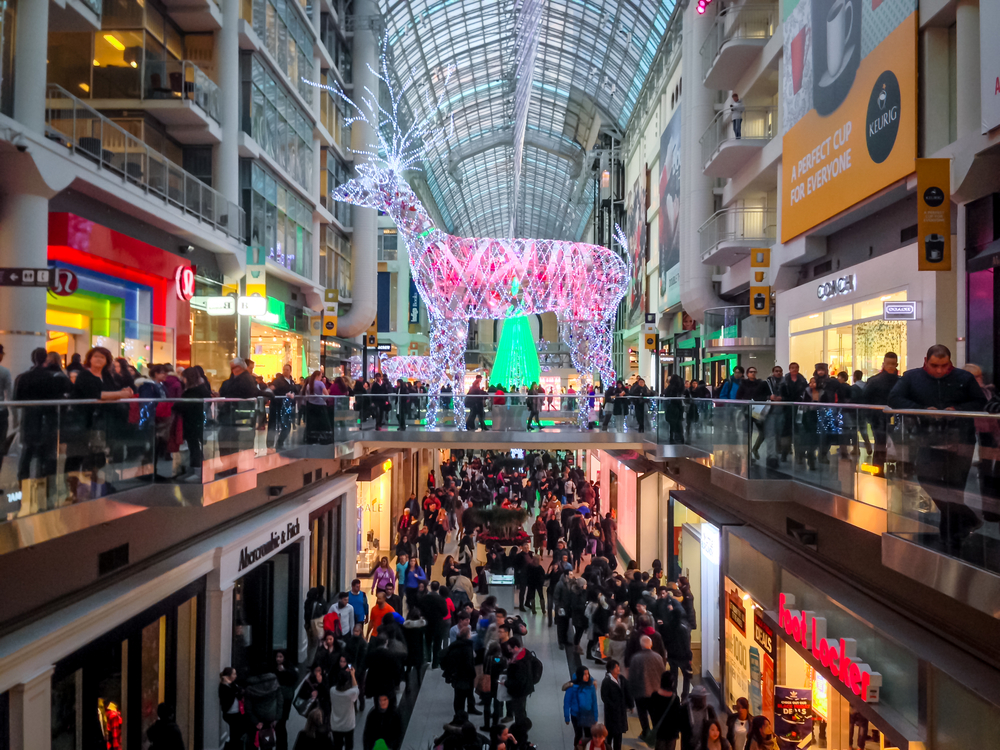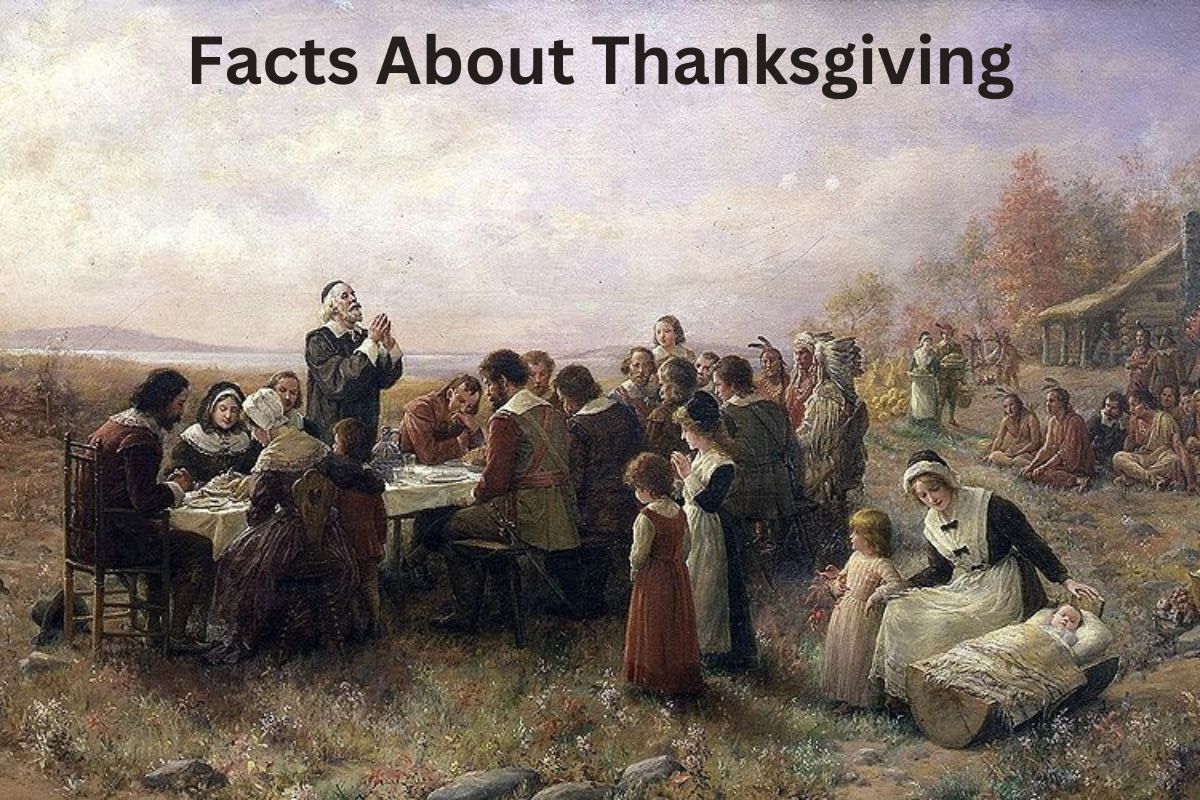Thanksgiving is a holiday celebrated in the United States and Canada. It originated as a harvest festival in 1621 when the Pilgrims and Wampanoag Native Americans came together in Plymouth, Massachusetts.
In the United States, Thanksgiving became an official holiday in 1863, designated as a day of gratitude and praise by President Abraham Lincoln. The holiday is typically observed with a festive meal featuring a roasted turkey and various side dishes.
Families gather to express gratitude, reconnect, and enjoy time together. The Macy’s Thanksgiving Day Parade and football games are popular traditions. Thanksgiving also marks the start of the holiday shopping season with Black Friday sales.
Similar gratitude celebrations are found in other countries. Overall, Thanksgiving is a time for reflection, gratitude, and togetherness.
Thanksgiving Facts
1. Thanksgiving is a national holiday celebrated in the United States and Canada
Thanksgiving is a holiday celebrated in the United States and Canada. In the U.S., it is observed on the fourth Thursday of November, while in Canada, it is celebrated on the second Monday in October.
The origins of Thanksgiving can be traced back to historical events in both countries.
2. The first Thanksgiving in North America is believed to have taken place in 1621 in Plymouth, Massachusetts
The first Thanksgiving in North America is believed to have taken place in 1621 in Plymouth, Massachusetts. The Pilgrims, who were English settlers seeking religious freedom, had arrived in Plymouth the previous year after a long and arduous journey on the Mayflower.

They faced a challenging winter, but with the help of the Wampanoag Native Americans, they learned vital agricultural techniques and successfully harvested their first crops.
To celebrate their bountiful harvest and give thanks, the Pilgrims and Wampanoag people came together for a three-day feast, which is now known as the first Thanksgiving.
3. The exact date of the first Thanksgiving is uncertain
The exact date of the first Thanksgiving is uncertain, but it is believed to have occurred sometime between September and November of 1621.
The Pilgrims’ records mention a harvest celebration, but the specific details, such as the exact date and the menu, are not well-documented.
Primary accounts from Pilgrims like Edward Winslow and Governor William Bradford provide some insight into the event, describing the gathering as a time of feasting, entertainment, and expressing gratitude.
4. Thanksgiving became an official national holiday in the United States in 1863
Thanksgiving became an official national holiday in the United States in 1863 when President Abraham Lincoln proclaimed a national day of “Thanksgiving and Praise to our beneficent Father who dwelleth in the Heavens.”
Lincoln’s proclamation was prompted by the efforts of Sarah Josepha Hale, a prominent writer and editor who advocated for a national Thanksgiving holiday as a way to foster unity and heal the wounds of the American Civil War.
In his proclamation, Lincoln designated the last Thursday in November as the day to be observed as Thanksgiving.
5. The traditional Thanksgiving meal often includes turkey, stuffing, mashed potatoes, cranberry sauce, and pumpkin pie

The traditional Thanksgiving meal often includes turkey, stuffing, mashed potatoes, cranberry sauce, and pumpkin pie. These dishes have become iconic symbols of the holiday, and families often have their own unique recipes and variations.
The centerpiece of the meal is typically a roasted turkey, which is a symbol of abundance and tradition. Stuffing, made from a mixture of bread, herbs, and other ingredients, is often cooked inside the turkey or served alongside it. Mashed potatoes, cranberry sauce, and pumpkin pie are popular accompaniments that complete the festive feast.
6. The Macy’s Thanksgiving Day Parade is a famous annual event held in New York City since 1924
The Macy’s Thanksgiving Day Parade is a beloved annual event that takes place in New York City since 1924. It has become an iconic part of Thanksgiving celebrations.
The parade features enormous floats, marching bands, celebrity performances, and the famous giant helium-filled balloons shaped like popular characters such as Snoopy and Mickey Mouse.
The parade attracts millions of spectators who line the streets of Manhattan, and it is also televised nationwide, entertaining viewers across the country.
7. Football has become a popular Thanksgiving tradition in the United States
Football has become a significant part of Thanksgiving Day traditions in the United States. The National Football League (NFL) holds games on Thanksgiving, providing fans with a full day of football entertainment.
The Thanksgiving Day football tradition began in 1920 when the NFL was formed. Initially, the games were primarily played by local teams, but over time, the tradition expanded to feature nationally televised matchups, often involving some of the league’s most historic and popular teams.
Many people enjoy watching football with their families on Thanksgiving, either attending games in person or gathering around the television.
8. Black Friday, the day after Thanksgiving, is known for its massive sales and shopping discounts

Black Friday, the day after Thanksgiving, has become synonymous with massive sales and shopping discounts. It marks the beginning of the holiday shopping season in the United States. Retailers offer significant discounts, and many people take advantage of the deals to start their Christmas shopping.
Black Friday has become a cultural phenomenon, with long lines, early store openings, and intense competition for limited-time offers. In recent years, online shopping has also gained prominence, with retailers offering Cyber Monday deals, extending the shopping spree beyond the physical stores.
9. The pardoning of a turkey by the President of the United States is a well-known Thanksgiving tradition
The pardoning of a turkey by the President of the United States is a well-known Thanksgiving tradition. Each year, the President is presented with a live turkey, and they ceremoniously grant the turkey a presidential pardon, sparing it from being slaughtered for the holiday meal.
The pardoned turkeys often receive whimsical names and live out the remainder of their lives on farms or in animal sanctuaries. The tradition of turkey pardoning dates back to the 1940s, with some variations and unofficial precedents before it became an established practice.
10. In Canada, Thanksgiving is celebrated earlier than in the United States
In Canada, Thanksgiving is celebrated earlier than in the United States. It originated as a way to give thanks for a successful harvest and is associated with the arrival of European settlers. The holiday has its roots in English traditions and is observed on the second Monday in October.
Canadian Thanksgiving shares similarities with its American counterpart, including feasting with family and expressing gratitude, but it has its distinct customs and cultural elements.
11. Thanksgiving is a time for expressing gratitude and spending time with loved ones
Thanksgiving is a time for expressing gratitude and spending time with loved ones. Many people use the holiday as an opportunity to reflect on their blessings and give thanks for the good things in their lives.
It is a time to appreciate family, friends, and the moments that bring joy and meaning. It is also a time for acts of kindness and reaching out to those in need, with many individuals and organizations engaging in charitable activities such as volunteering at food banks or donating to support those who are less fortunate.
Thanksgiving serves as a reminder to embrace gratitude, compassion, and the spirit of giving.
12. Thanksgiving parades are not exclusive to New York City
Thanksgiving parades are not exclusive to New York City. Many other cities across the United States hold their own parades to celebrate the holiday.
For example, the America’s Thanksgiving Parade in Detroit, Michigan, is one of the oldest and largest Thanksgiving parades in the country. It features floats, marching bands, giant balloons, and celebrity appearances.
Similarly, Philadelphia hosts the 6abc Dunkin’ Donuts Thanksgiving Day Parade, which is the oldest Thanksgiving parade in the United States. These parades bring communities together, provide entertainment for spectators, and add to the festive atmosphere of the holiday.
13. The average number of calories consumed during a Thanksgiving meal is estimated to be around 3,000 to 4,500 calories
The average number of calories consumed during a Thanksgiving meal is estimated to be around 3,000 to 4,500 calories. The traditional Thanksgiving feast, with its rich and indulgent dishes, can contribute to a significantly higher calorie intake compared to a typical daily diet.
The main culprits of calorie-heavy consumption are the turkey, gravy, stuffing, mashed potatoes, buttery side dishes, and desserts like pumpkin pie. This excessive calorie intake has led to the humorous term “turkey coma” or “food coma” to describe the lethargy or drowsiness some people experience after a large Thanksgiving meal.
14. The tradition of breaking the wishbone, a bone from the turkey’s breast, is believed to bring good luck
The tradition of breaking the wishbone, a bone from the turkey’s breast, is believed to bring good luck. After the turkey is cooked, two people each take hold of one end of the wishbone and make a wish. Then, they pull on the bone, and it breaks.
It is said that the person who ends up with the larger piece of the bone will have their wish granted. This tradition is often enjoyed by families and friends, adding a playful element to the Thanksgiving celebration.
15. Thanksgiving has cultural variations beyond the United States and Canada
While Thanksgiving is predominantly celebrated in the United States and Canada, similar harvest festivals or days of gratitude are observed in other parts of the world.
In Germany, the Erntedankfest (Harvest Thanksgiving Festival) is celebrated with parades, church services, and feasts to express gratitude for the harvest.
In Japan, Labor Thanksgiving Day, known as Kinrō Kansha no Hi, is a national holiday observed on November 23rd to honor labor and give thanks for the year’s blessings.
In Liberia, National Thanksgiving Day is celebrated on the first Thursday in November and involves church services, parades, and cultural performances to give thanks for peace, unity, and the nation’s progress.
These diverse celebrations demonstrate the universal theme of expressing gratitude and appreciation for the abundance in one’s life.
